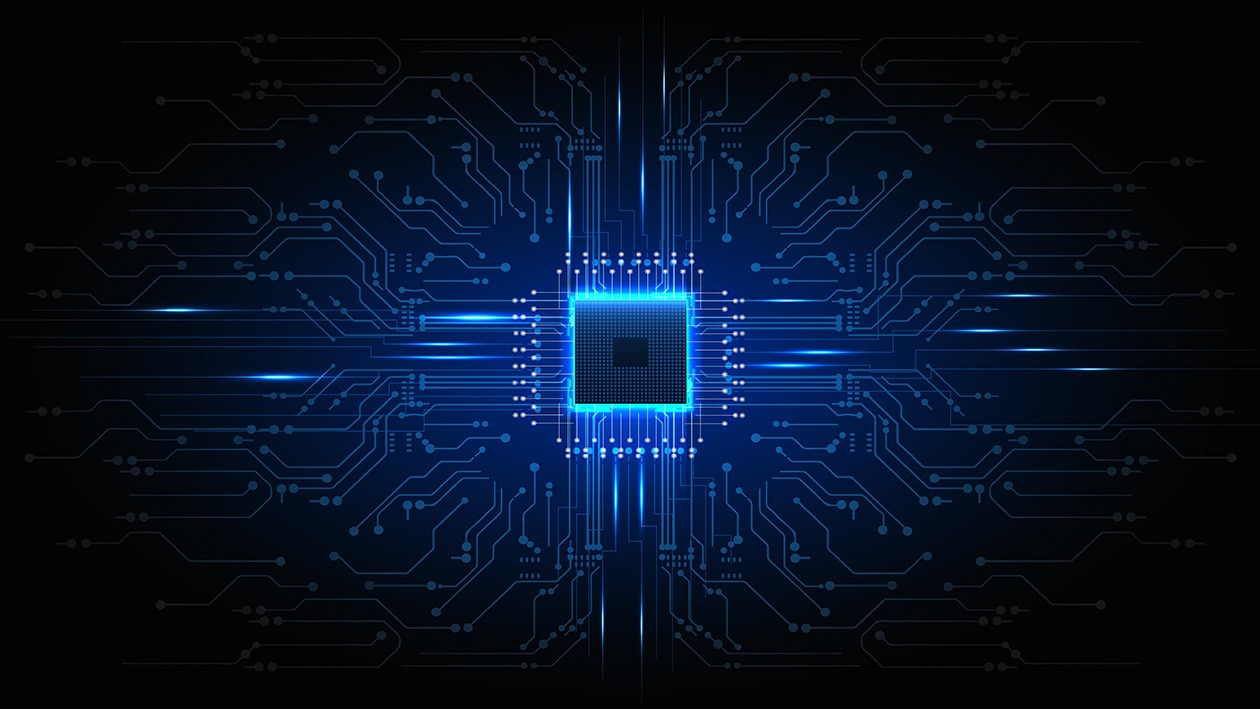Two Heads Aren’t Always Better: Myths & Urban Legends About Dual-Socket Servers
Sep 27, 2023

In the world of server technology, dual-socket was once cutting-edge technology. Dual-socket was the best way to scale the performance of individual servers by putting two processors in a single server —theoretically up to double performance in about the same server footprint. They became prominent during the transition from scale-up (more sockets) to scale-out (more servers) computing. This was the transition from the mainframe and many socket server era to mainstream dual-socket x86 servers.
The industry landed on dual-socket for scale-out due to a complex TCO equation relating to many variables including (but not limited to) memory, storage, IO, performance, cost, power, and volumetric space. Simply put, dual-socket hit a magic sweet spot at the time to get enough cores, memory capacity and I/O needed for maximum workload performance.
Today, dual-socket servers are not needed for scale-out, and in fact the sweet spot is shifting for several reasons. Modern “Real Single-Socket Servers” powered by AMD EPYC™ processors can deliver a new sweet spot for TCO. This is based on past and new variables that are driving greater adoption of single-socket servers. Today's EPYC processors have sufficient cores, memory capacity and I/O to meet most application performance needs. But buyer beware, not all single-socket servers are “real single-socket servers” in that they skimp on cores, memory channels, I/O lanes, RAS, etc. To be a “real single-socket server” they need to nearly match the capabilities of their big brother dual-socket server.
Myths & Urban Legends
The biggest myth of all time about dual-socket servers is redundancy. Let’s call this one an “urban legend” - in a dual-socket server if one socket fails then everything running on it will fail over to the other socket and keep running. That’s simply false for mainstream dual-socket servers with mainstream operating systems, but I cannot tell you how many times in my career I have heard redundancy stated.
Reliability is another myth of dual-servers vs single-socket server because reliability is a decaying probability function which depends on the failure rate. Failure rate is directly related to complexity, in other words, the more components in a server, the higher the failure rate. Single-socket servers have fewer components in the BOM, typically better power and cooling characteristics, can be built with server-grade CPUs, etc., all which corelate to reduced failure rates.
Another misconception about one-socket vs. dual-socket is core density. This myth claims that servers need dual-socket processors to achieve high core density and deliver maximum performance. This may be true for the competition, but not for AMD EPYC™. The 4th Gen AMD EPYC™ processor supports up to 128 cores per socket. By comparison, the competitor’s Intel® Xeon® Platinum 8490H processor only supports 60 cores. That means AMD’s competitor’s customers using x86 servers need to take on the added cost and complexity of a dual-socket server to get performance that is competitive with what AMD can achieve in a “real single-socket server”.
Memory and I/O limitations are additional myths between dual-socket and single-socket servers. Again, while this may be a limitation of the competition, AMD enables a “real single-socket server” with 12 Channels of DDR5 (up to 24 DIMMS) along with 128 lanes of PCI Express® Gen5 in a single-socket server. By way of comparison, the top-of-stack Intel® Xeon® Platinum 8490H in a single-socket configuration would be limited to 8 channels of memory (16 DIMMS) and 80 lanes of PCI Express Gen5, requiring customers to buy more CPUs to reach parity in I/O and memory levels required in a server.
Until AMD brought out EPYC™ single-socket optimized server CPUs the competition offered very limited single-socket CPUs, namely the Intel® Xeon® E family, which was limited to 8 cores, 2 DDR channels (4 DIMMS), and 40 lanes of PCI Express Gen4. This un-competitive offering arguably led to low adoption of single-socket servers in the past and can be credited with many of the myths and legends between single-socket and dual-socket servers that stemmed from the lack of choice in robust enterprise class “real single-socket server”.

When Single Socket Is the Right Solution
There are instances, however, when a single-socket server is often better than a dual-socket machine. Consider a single AMD EPYC™ 9554P based server, offering 64 total cores, compared with a dual-socket server using 40-core Intel® Xeon® Platinum 8380 processors, with 80 total cores.
At first glance, it may appear that the 80-core dual-socket beats the 64-core single socket system. However, it only takes a small amount of scrutiny to see that this isn’t the case. Although the Intel-powered machine has 25% more cores than the AMD-powered server, the AMD CPU-powered machine is more powerful—about 5% greater performance. And that performance comes with 25% reduced power consumption, a 62% lower CPU list price compared with the dual-socket competitor-based server, with less NUMA complexity, and fewer parts that can fail.¹
With a single-socket configuration, you can get a big efficiency benefit without sacrificing performance. What’s more, that efficiency benefit scales. For example, it takes just 12 servers running single-socket 96-core AMD EPYC™ 9654P processors to deliver 10,000 units of integer performance — an important metric of computer speed – compared with 17 servers running Intel dual-socket processors, 40-core Intel Xeon 8380 CPUs to deliver the same result. The AMD EPYC™ solution uses an estimated 29% fewer servers and 47% less power, saving about 278,148kWH of electricity over three years, reducing total cost of ownership. Reducing energy cost and usage is particularly important and challenging today, as energy costs rise, and companies are trying to maximize investments.²
As customers see the benefits of single socket servers, deployments continue to rise. Some customers have gone all in and are, in fact, basing most new deployments on “real single-socket" servers.
This can’t help but remind me of the saying “burning the boats.” Sun Tzu, in his book “Art of War,” taught armies to burn their boats and destroy the bridges behind them as they advanced into new territory. He argued that soldiers without the option of taking flight are more likely to prevail over their objective. Moving most new deployments to “real single-socket servers” certainly sounds like “burning the boats”.
This Isn’t the Death of Dual Sockets
Of course, this isn’t the death of dual socket servers; single-socket servers are simply another tool that should be considered. Dual-socket servers can be the right choice when companies need maximum performance and are willing to accommodate those needs by paying more for hardware, power, and data center real estate. These kinds of intense applications include customer relationship management, content delivery systems, and others. Single-socket servers are great for standard business applications: networking and security, most database applications, enterprise resource management, custom business applications, supply chain management, human resources applications, and more. Dual-socket servers are not going anywhere; the more likely reality is that quad-socket servers converge to dual-socket, and some percentage of dual-socket will convert to single-socket. But the big picture is the world has been migrating from many sockets to less sockets since the dawn of computing, dual-socket has been the workhorse for many years, many sockets to dual to single is just part of the optimization process, fighting gravity is never a winning strategy.
What are the top 10 reasons to consider a “real single-socket server” now?
- No compromise on performance – High core count and performant cores are available in a single-socket server: AMD offers 96 cores in the EPYC™ 9654 and 128 cores in the EPYC™ 9754 for single-socket servers.
- Memory scaling without adding sockets – 4th Gen EPYC™ single-socket servers can enable 12 DDR5 channels and up to 24 DIMMs for a capacity of 6TBs.
- I/O scaling without compromise – The unique architecture of AMD EPYC™ processors provides huge I/O capabilities in both single-socket and dual-socket designs, so customers don’t have to buy more CPUs just to get I/O.
- Complexity reduction – Avoiding the dual socket NUMA complexity makes it easier to deploy and schedule workloads across a fleet without having to worry about the NUMA implications.
- Consolidation cost reduction – The reduced complexity of the server makes it easier to deploy, manage, service, and upgrade.
- Reliability and cost effectiveness for resiliency clustering – Many cloud-native applications require a minimum number of nodes for resiliency clustering. Single-socket server can lower the cost for that resiliency to achieve the minimum server node count.
- Avoid datacenter “hot spotting” – Many data centers are power and cooling challenged. Deploying single-socket servers allows distribution of the power and cooling across the datacenter.
- Improved energy efficiency – Higher levels of integration has proven time and time again to deliver higher efficiency and overall lower power. In the case of the EPYC 9754 versus an Intel Xeon 8490H, the EPYC CPU’s 128 cores in a single-socket are lower power and higher performance than 64 cores per socket in two sockets of the Xeon.³ In the past dual-socket had a SPECpower® advantage in overall energy efficiency by sharing more resources across dual-sockets. That is no longer the case with AMD EPYC™.
- Better licensing cost model (for some software) – Some software still licenses by sockets. Avoiding dual-socket servers can reduce licensing costs for some software. Even in core licensing models it is less costly to deploy high core count servers (single or dual socket) to amortize the infrastructure cost across more cores.
- Shift to multi-host infrastructure – Modern infrastructure is moving to offload much of the OS and hypervisor software stack to the DPU/SmartNIC. DPUs like the AMD Pensando™ enable DPU sharing across multiple servers. Single-socket servers are ideal for this new deployment model - connecting multiple single-socket servers to one DPU.
Single Socket Solutions: A Great Choice
“Real single-socket servers” are great alternatives to dual-socket configurations and are often the best alternative in many cases. They enable more options for IT in their tool chest to optimize the modern datacenter with improved energy efficiency, as well as exceptional system performance. It’s even possible for users to see similar results running AMD single-socket servers, but at much lower power and cost than the competition’s dual-socket server.⁴ In other cases, dual-socket servers are best. AMD provides the better choice.
Find out more about 4th Gen AMD EPYC™ processors: https://www.amd.com/en/products/processors/server/epyc/4th-generation-9004-and-8004-series.html
Resources
- SP5-069: :SPECrate®2017_int_base estimate based on internal AMD reference platform measurements and published score from www.spec.org as of 11/10/2022. Comparison of estimated 1P AMD EPYC 9554P (631 SPECrate®2017_int_base, 400 Total TDP W, 64 Total Cores, $7104 Total CPU $, AMD Est) is 1.05x the performance of published 2P Intel Xeon Platinum 8380 (602 SPECrate®2017_int_base, 540 Total TDP W, 80 Total Cores, $18718 Total CPU $, http://spec.org/cpu2017/results/res2021q2/cpu2017-20210521-26364.html) [at 1.42x the performance/W] [at 2.76x the performance/CPU$]. AMD 1Ku pricing and Intel ARK.intel.com specifications and pricing as of 8/22/22. SPEC®, SPEC CPU®, and SPECrate® are registered trademarks of the Standard Performance Evaluation Corporation. See www.spec.org for more information. OEM published scores will vary based on system configuration and determinism mode used (default cTDP performance profile)
- SP5TCO-003: This scenario contains many assumptions and estimates and, while based on AMD internal research and best approximations, should be considered an example for information purposes only, and not used as a basis for decision making over actual testing. The Bare Metal Server Greenhouse Gas Emissions TCO (total cost of ownership) Estimator Tool compares the selected AMD EPYC™ and Intel® Xeon® CPU based server solutions required to deliver a TOTAL_PERFORMANCE of 10000 units of integer performance based on the published scores for Intel Xeon and AMD EPYC CPU based servers. This estimation reflects a 3-year time frame. This analysis compares a 1P AMD EPYC 9654P (96c) CPU powered server with an estimated SPECrate®2017_int_base a score of 895, performance estimated using AMD reference platform; compared to a 2P Intel Xeon 40 core Platinum_8380 based server with a SPECrate®2017_int_base score of 602, https://spec.org/cpu2017/results/res2021q2/cpu2017-20210521-26364.pdf. For additional details, see https://www.amd.com/en/legal/claims/epyc-claims.html#q=SP5TCO-003.
- Based on published results as of 9.12.2023. A single-socket EPYC 9754 running SPECpower® ranges from 59W to 329W delivering max 12.5M ssj_ops at 100% load ((30,602 overall ssj_ops/W, 2U, https://spec.org/power_ssj2008/results/res2023q3/power_ssj2008-20230523-01267.html) vs a dual-socket Intel XEON 8490H ranges from 163W to 915W delivering max 14.9M ss_ops at 100% load ((16,902 overall ssj_ops/W, 2U https://spec.org/power_ssj2008/results/res2023q3/power_ssj2008-20230619-01282.html. The 2P AMD EPYC 9654, is 1.81x the overall ssj_ops/watt performance of best published 2P Intel Xeon Platinum 8490H. SPEC® and SPECpower_ssj® are registered trademarks of the Standard Performance Evaluation Corporation. See www.spec.org for more information.
- SP5TCO-029: This scenario contains many assumptions and estimates and, while based on AMD internal research and best approximations, should be considered an example for information purposes only, and not used as a basis for decision making over actual testing. The Bare Metal Server Greenhouse Gas Emissions TCO (total cost of ownership) Estimator Tool - version 6.80, compares the selected AMD EPYC™ and Intel® Xeon® CPU based server solutions required to deliver a TOTAL_PERFORMANCE of 7500 units of integer performance based on the published scores for these specific Intel Xeon and AMD EPYC CPU based servers as of January 10, 2023. This estimation reflects a 3-year time frame with a PUE of 1.7 and a power US power cost of $0.16 / kWh. This analysis compares a 1P AMD 64 core AMD EPYC_9554P powered server with an estimated SPECrate2017_int_base score of 631 * performance estimated using AMD reference platform; to a 2P Intel Xeon 32 core Platinum_8454H based server with a SPECrate2017_int_base score of 522, https://spec.org/cpu2017/results/res2023q1/cpu2017-20221205-32968.pdf. For additional details, see https://www.amd.com/en/legal/claims/epyc-claims.html#q=SP5TCO-029
